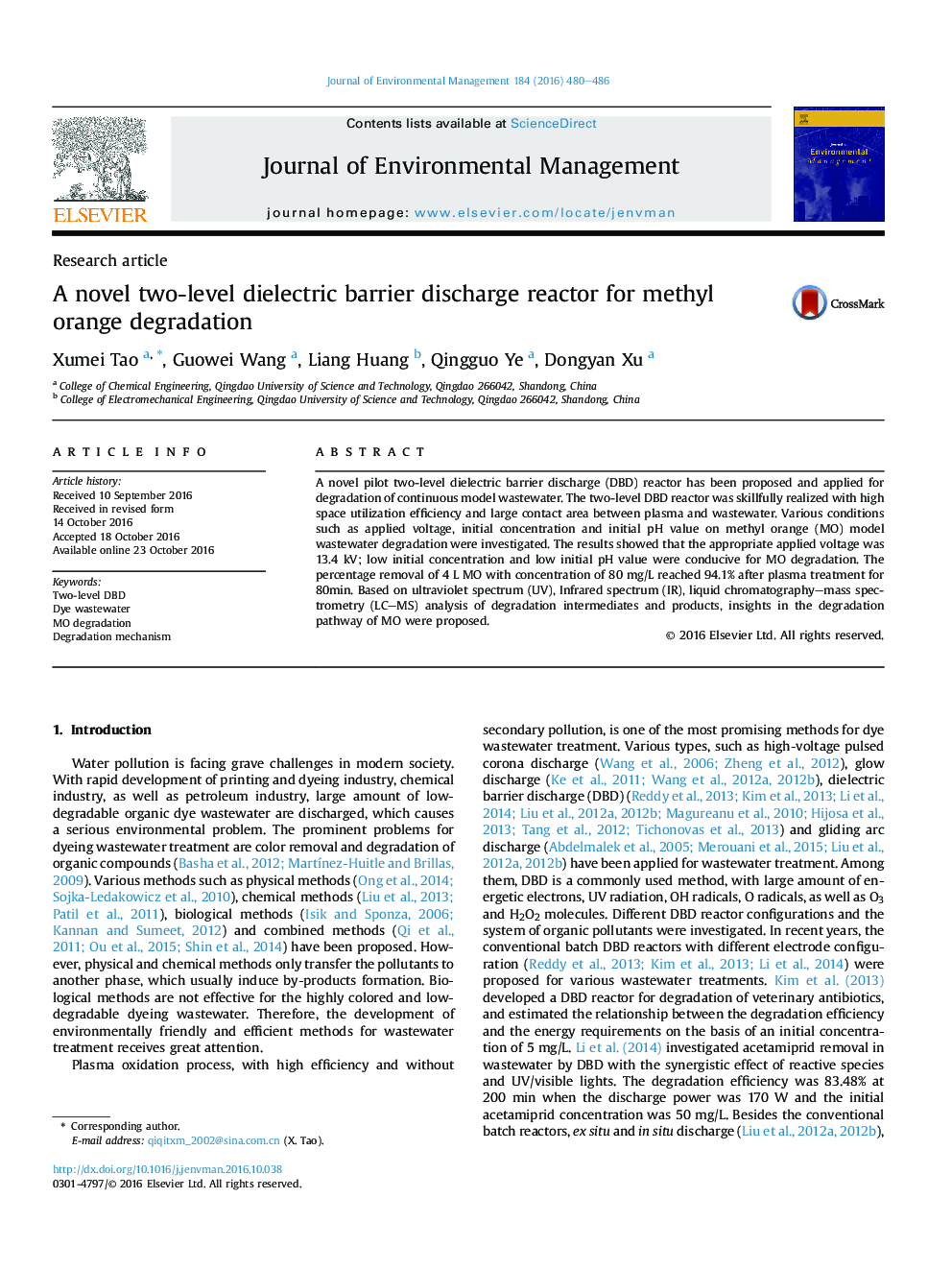| Article ID | Journal | Published Year | Pages | File Type |
|---|---|---|---|---|
| 5117159 | Journal of Environmental Management | 2016 | 7 Pages |
â¢A novel two-level dielectric barrier discharge reactor was first proposed.â¢The reactor could continuously degrade high concentration and large processing capacity of wastewater.â¢The degradation pathway of methyl orange wastewater was discussed.â¢The influence factors that affect the degradation of wastewater in the DBD reactor had been researched.
A novel pilot two-level dielectric barrier discharge (DBD) reactor has been proposed and applied for degradation of continuous model wastewater. The two-level DBD reactor was skillfully realized with high space utilization efficiency and large contact area between plasma and wastewater. Various conditions such as applied voltage, initial concentration and initial pH value on methyl orange (MO) model wastewater degradation were investigated. The results showed that the appropriate applied voltage was 13.4Â kV; low initial concentration and low initial pH value were conducive for MO degradation. The percentage removal of 4Â L MO with concentration of 80Â mg/L reached 94.1% after plasma treatment for 80min. Based on ultraviolet spectrum (UV), Infrared spectrum (IR), liquid chromatography-mass spectrometry (LC-MS) analysis of degradation intermediates and products, insights in the degradation pathway of MO were proposed.
Graphical abstractDownload full-size image
